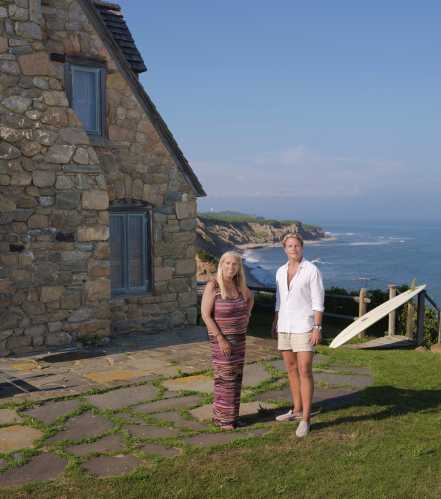A Big Morning
My wife and I are currently spending our eighth winter on Longboat Key, which is on Florida’s west coast near Sarasota. Most of my mornings start on Whitney Beach across from where we stay. When the beach is bird-rich, a big morning can start soon after you set foot on the sand. This was what it was like one day last winter.
The first bird I see is a great blue heron swooping very low across the sand toward a gray and salmon colored horizon. The heron lands near a person who is looking for shells. The blue seems to be waiting for throwaways, apparently having mistaken the shell collector for a fisherman. Realizing no meal is forthcoming, the hungry heron quickly leaves.
Two brown pelicans glide low over the green Gulf of Mexico then simultaneously start to flap their wings. One’s wing tips seem to be no more than an inch off the surface. How is that possible? This is hardly the first time that I’ve marveled at the precision flying of these bulky brown birds and will likely not be the last.
Nearby a group of sanderlings, chunky sandpipers, are pecking at the wet sand. They race off, chasing after the next retreating wave and dig into the sand again seeking aquatic invertebrates. Near a group of red knots, also sandpipers, is a lone oystercatcher feeding in the water. This is a 17.5-inch brown, black and white bird with a long thick red bill. It’s up to its pink knees in the water digging into the sand below. Incoming waves cover its head but it’s getting shells. I admire the oystercatcher’s sturdiness and wonder if it sees through the water to get at the clamshells that it is now opening.
Further up the beach I’m almost at Beer Can Island, which isn’t an island but a peninsula at Longboat Key’s northernmost tip. Here there are 10 willets, which are large, nondescript brown sandpipers with somewhat overly long bills. They have an understated elegance and walk the edge of the water displaying admirable litheness. These birds often fly off calling, leaving a trail of their sound. Now some come out of the water and step solidly on the sand, planting their feet on it. I’ve never before noticed this movement, which interests me.
At high tide on Beer Can Island, a lagoon has still-as-glass water. On its far side are eight feeding white ibises. On the beach a man is photographing some red knots at the water’s edge. His flash goes off a number of times on this cloudy morning. The knots fly away in a long line over the light blue water. The photographer turns his attention to eight white ibises that may have flown over from the lagoon. As the knots fly, two ibises jump up, dangling their long reddish legs. Might make an interesting picture.
On Whitney Beach there’s a conglomeration of gulls, terns and shorebirds, which I refer to as “the assembled multitude.” Among them are royal terns, large at 20 inches with orange/yellow bills. There’s one whose body is lowered with its wing joints held slightly out. It is close to another royal looking up at it and squawking mercilessly. This is hardly the first time I’ve seen this behavior here in the last two or three winters. I believe that one is “begging” the other for something, possibly food. Yet I’ve never seen any food transferred to the “beggar.” I don’t know how the silent tern can stand the constant noise. On another section of the beach a group of sanderlings seem to be done feeding and are climbing up a small incline where they rest. As they climb slowly up they look like tiny mountain goats. I’m charmed.
Later in winter, red-breasted mergansers, diving ducks, can sometimes be seen in large groups. However on Beer Can Island there’s a lone red-breasted merganser in the water close to shore. It has a speckled, dirty-white breast, a red crest in back of its head and a rapier-like bill that has serrated “teeth” allowing the duck to hold fish. It’s just beyond the swells when the bird nicknamed “sawbill” dives and comes up with its bill open in which it holds something that is quickly swallowed. The yellow-billed duck quickly shakes its head side to side. Look at that small black eye. The merganser then rears up quickly and shakes its wings like a loon but more rapidly. It continues paddling around in the clear water with the sun now starting to peek out.
A group of 20 red knots flies in and lands. One is limping. It has a light green tag on its right leg, a light purple one on its left leg and a metal band there also. None of the others appears to be banded or tagged. Not putting any weight on it, the “limper” holds up its right foot. Then the bird begins to walk. I really don’t want to think about how this injured bird will keep up with the others, get food and how long it will be able to do so. I’m upset but know that birding frequently means seeing more injuries. It comes with the territory. I get over it quickly.
It’s now 11:30 a.m. and I’ve been out for three hours. The morning is winding down. Ibises no longer feeding are slowly taking to the sand. Willets are clumping together as are sanderlings. After a morning of feeding, avian energy is diminishing. I’m also ready for a break. Half of the sky is a ghostly white. A lone sailboat with a single sail unfurled is heading toward the horizon, about to disappear from sight. I watch the poetry of color and shape as the sea has the last word. The moment is sublime.


































